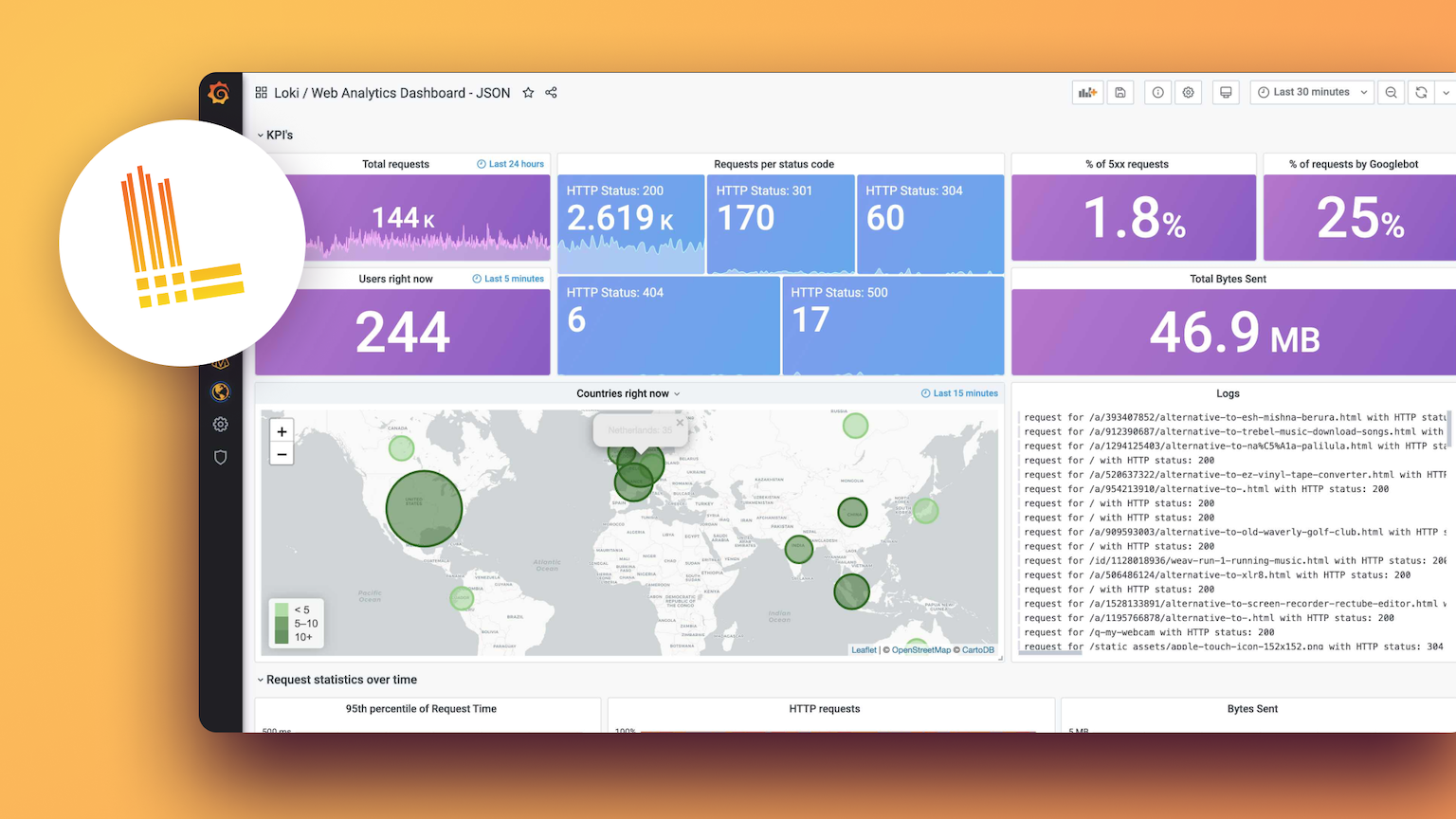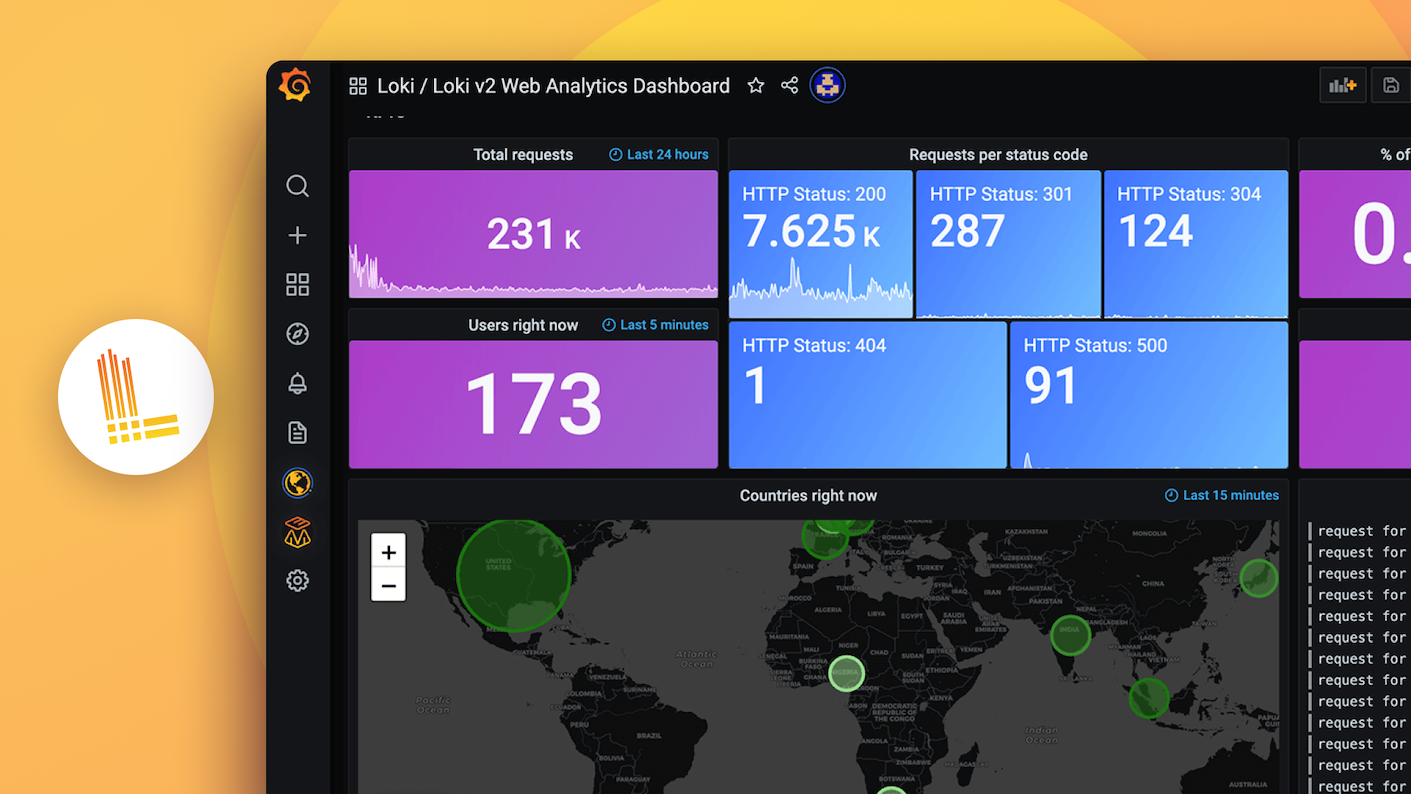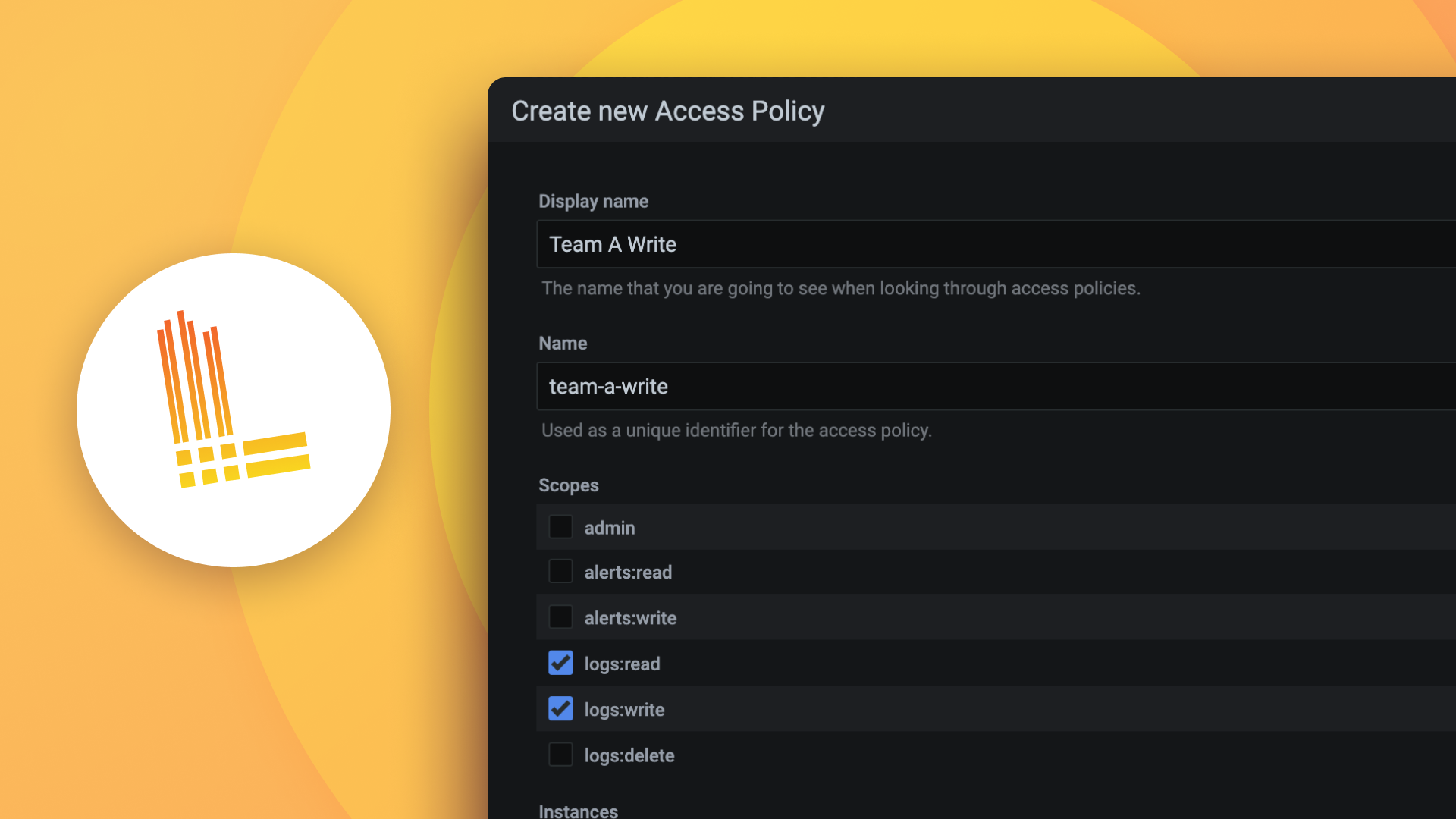multiline
注意
Promtail 已被弃用,并将通过长期支持 (LTS) 持续到 2026 年 2 月 28 日。Promtail 将于 2026 年 3 月 2 日达到生命周期结束 (EOL)。您可以在此处找到迁移资源。
multiline 阶段在将多行传递到流水线中的下一个阶段之前,会将它们合并为一个多行块。
新块由 firstline 正则表达式标识。任何与该表达式*不*匹配的行都被视为前一个匹配块的一部分。
Schema
multiline:
# RE2 regular expression, if matched will start a new multiline block.
# This expression must be provided.
firstline: <string>
# The maximum wait time will be parsed as a Go duration: https://golang.ac.cn/pkg/time/#ParseDuration.
# If no new logs arrive within this maximum wait time, the current block will be sent on.
# This is useful if the observed application dies with, for example, an exception.
# No new logs will arrive and the exception
# block is sent *after* the maximum wait time expires.
# It defaults to 3s.
max_wait_time: <duration>
# Maximum number of lines a block can have. If the block has more lines, a new block is started.
# The default is 128 lines.
max_lines: <integer>示例
预定义日志格式
考虑来自一个简单 flask 服务的这些日志。
[2020-12-03 11:36:20] "GET /hello HTTP/1.1" 200 -
[2020-12-03 11:36:23] ERROR in app: Exception on /error [GET]
Traceback (most recent call last):
File "/home/pallets/.pyenv/versions/3.8.5/lib/python3.8/site-packages/flask/app.py", line 2447, in wsgi_app
response = self.full_dispatch_request()
File "/home/pallets/.pyenv/versions/3.8.5/lib/python3.8/site-packages/flask/app.py", line 1952, in full_dispatch_request
rv = self.handle_user_exception(e)
File "/home/pallets/.pyenv/versions/3.8.5/lib/python3.8/site-packages/flask/app.py", line 1821, in handle_user_exception
reraise(exc_type, exc_value, tb)
File "/home/pallets/.pyenv/versions/3.8.5/lib/python3.8/site-packages/flask/_compat.py", line 39, in reraise
raise value
File "/home/pallets/.pyenv/versions/3.8.5/lib/python3.8/site-packages/flask/app.py", line 1950, in full_dispatch_request
rv = self.dispatch_request()
File "/home/pallets/.pyenv/versions/3.8.5/lib/python3.8/site-packages/flask/app.py", line 1936, in dispatch_request
return self.view_functions[rule.endpoint](**req.view_args)
File "/home/pallets/src/deployment_tools/hello.py", line 10, in error
raise Exception("Sorry, this route always breaks")
Exception: Sorry, this route always breaks
[2020-12-03 11:36:23] "GET /error HTTP/1.1" 500 -
[2020-12-03 11:36:26] "GET /hello HTTP/1.1" 200 -
[2020-12-03 11:36:27] "GET /hello HTTP/1.1" 200 -我们希望将堆栈跟踪的所有行合并为一个多行块。在此示例中,所有块都以方括号中的时间戳开头。因此,我们使用 firstline 正则表达式 ^\[\d{4}-\d{2}-\d{2} \d{1,2}:\d{2}:\d{2}\] 配置了一个 multiline 阶段。这将匹配堆栈跟踪的开头,但不匹配直到 Exception: Sorry, this route always breaks 的后续行。这些行将成为一个多行块,并在 Loki 中成为一个日志条目。
- multiline:
# Identify timestamps as first line of a multiline block. Enclose the string in single quotes.
firstline: '^\[\d{4}-\d{2}-\d{2} \d{1,2}:\d{2}:\d{2}\]'
max_wait_time: 3s
- regex:
# Flag (?s:.*) needs to be set for regex stage to capture full traceback log in the extracted map.
expression: '^(?P<time>\[\d{4}-\d{2}-\d{2} \d{1,2}:\d{2}:\d{2}\]) (?P<message>(?s:.*))$'自定义日志格式
该示例假设您无法控制日志格式。因此,需要一个更精心设计的正则表达式来匹配第一行。如果您可以控制被监控系统的日志格式,我们可以简化第一行匹配。
这次我们来看看一个简单的 Akka HTTP 服务的日志。
[2021-01-07 14:17:43,494] [DEBUG] [akka.io.TcpListener] [HelloAkkaHttpServer-akka.actor.default-dispatcher-26] [akka://HelloAkkaHttpServer/system/IO-TCP/selectors/$a/0] - New connection accepted
[2021-01-07 14:17:43,499] [ERROR] [akka.actor.ActorSystemImpl] [HelloAkkaHttpServer-akka.actor.default-dispatcher-3] [akka.actor.ActorSystemImpl(HelloAkkaHttpServer)] - Error during processing of request: 'oh no! oh is unknown'. Completing with 500 Internal Server Error response. To change default exception handling behavior, provide a custom ExceptionHandler.
java.lang.Exception: oh no! oh is unknown
at com.grafana.UserRoutes.$anonfun$userRoutes$6(UserRoutes.scala:28)
at akka.http.scaladsl.server.Directive$.$anonfun$addByNameNullaryApply$2(Directive.scala:166)
at akka.http.scaladsl.server.ConjunctionMagnet$$anon$2.$anonfun$apply$3(Directive.scala:234)
at akka.http.scaladsl.server.directives.BasicDirectives.$anonfun$mapRouteResult$2(BasicDirectives.scala:68)
at akka.http.scaladsl.server.directives.BasicDirectives.$anonfun$textract$2(BasicDirectives.scala:161)
at akka.http.scaladsl.server.RouteConcatenation$RouteWithConcatenation.$anonfun$$tilde$2(RouteConcatenation.scala:47)
at akka.http.scaladsl.util.FastFuture$.strictTransform$1(FastFuture.scala:40)
...初看起来,这些日志似乎与其他日志类似。我们来看看日志格式。
<configuration>
<appender name="FILE" class="ch.qos.logback.core.FileAppender">
<file>crasher.log</file>
<append>true</append>
<encoder>
<pattern>​[%date{ISO8601}] [%level] [%logger] [%thread] [%X{akkaSource}] - %msg%n</pattern>
</encoder>
</appender>
<appender name="ASYNC" class="ch.qos.logback.classic.AsyncAppender">
<queueSize>1024</queueSize>
<neverBlock>true</neverBlock>
<appender-ref ref="STDOUT" />
</appender>
<root level="DEBUG">
<appender-ref ref="ASYNC"/>
</root>
</configuration>除了每行日志开头都有 ​ 之外,这个 Logback 配置没有什么特别之处。这是零宽空格字符的 HTML 代码。它使识别第一行变得简单得多,并且不可见。因此,它不会改变日志的视图。新的第一行匹配正则表达式是 \x{200B}\[。200B 是零宽空格字符的 Unicode 码点。
multiline:
# Identify zero-width space as first line of a multiline block.
# Note the string should be in single quotes.
firstline: '^\x{200B}\['
max_wait_time: 3s零宽空格可能不适合所有人。任何不太可能出现在常规日志中的特殊字符应该都能很好地工作。



